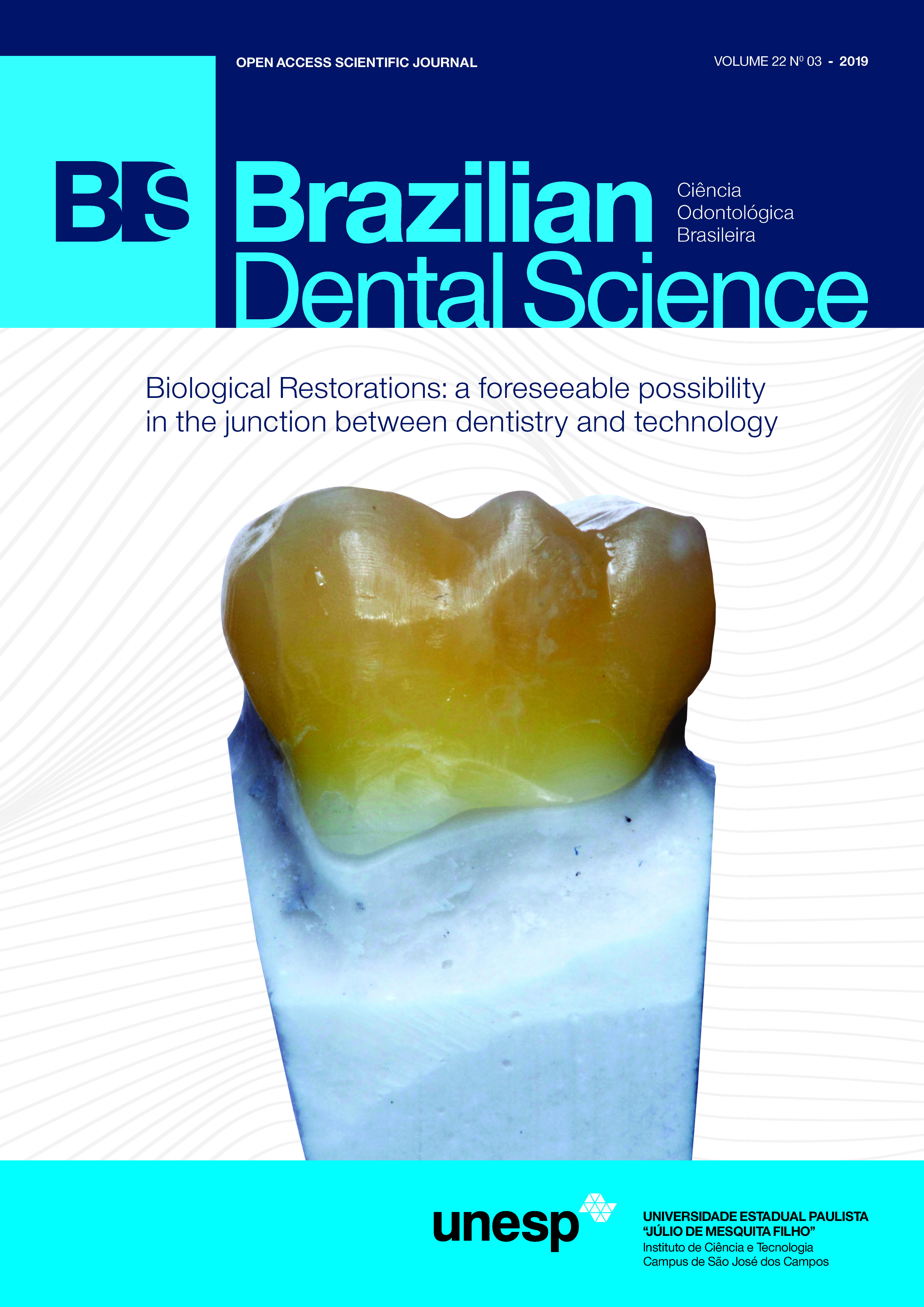Antimicrobial activity of various brands of children's toothpastes formulated with Triclosan, Fluoride and Xylitol
DOI:
https://doi.org/10.14295/bds.2019.v22i3.1739Abstract
Objective: Evaluate and compare the antimicrobial efficacy of four different commercially available children’s toothpastes on bacteria growth inhibition from oral microbiota of young children. Material and Method: The toothpastes tested contained: 1100 ppm sodium fluoride, xylitol and 750 ppm sodium fluoride, xylitol and 500 ppm sodium fluoride, and xylitol and triclosan. Twenty 18 to 30 month-old children were selected. Nonstimulated saliva samples were collected and inoculated on brain heart infusion (BHI) agar. Toothpaste dilutions were applied into the agar wells and incubated at 37ºC for 24 hours in microaerophilic conditions. Saline and 0.12% chlorhexidine were used as controls. Antimicrobial activity was determined in duplicate by agar-well diffusion technique. Bacterial growth inhibition zones were recorded in mm. Statistical analysis was performed using ANOVA and Tukey's test (p<0.05). Results: All toothpastes showed antimicrobial activity when compared to negative control (p<0.05). Toothpaste containing triclosan presented the highest antimicrobial activity followed, in this order, by xylitol and 750 ppm sodium fluoride, chlorhexidine, 1100 ppm sodium fluoride, xylitol and 500 ppm sodium fluoride and saline. Conclusions: Toothpaste containing triclosan and xylitol presented excellent antimicrobial activity, and may be considered a good option for young children.
Key words: Toothpastes. Oral hygiene. Pediatric Dentistry.
Downloads
Downloads
Additional Files
Published
How to Cite
Issue
Section
License
Brazilian Dental Science uses the Creative Commons (CC-BY 4.0) license, thus preserving the integrity of articles in an open access environment. The journal allows the author to retain publishing rights without restrictions.
=================




























